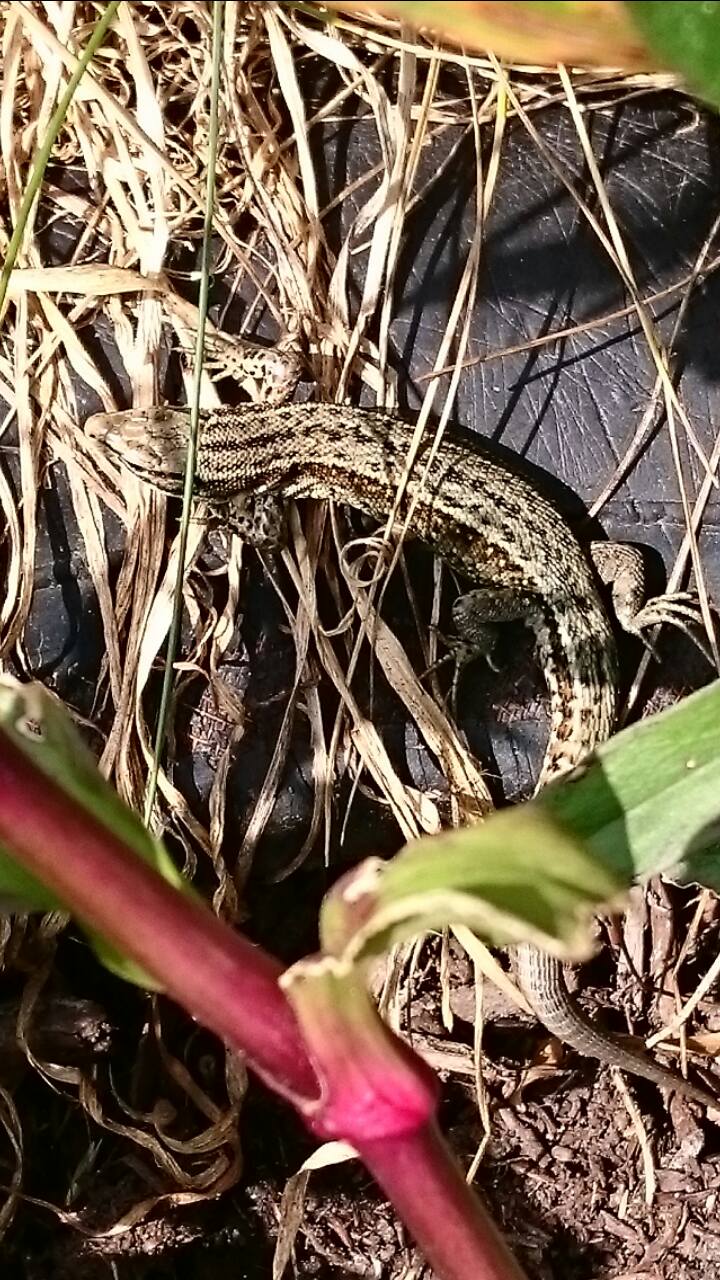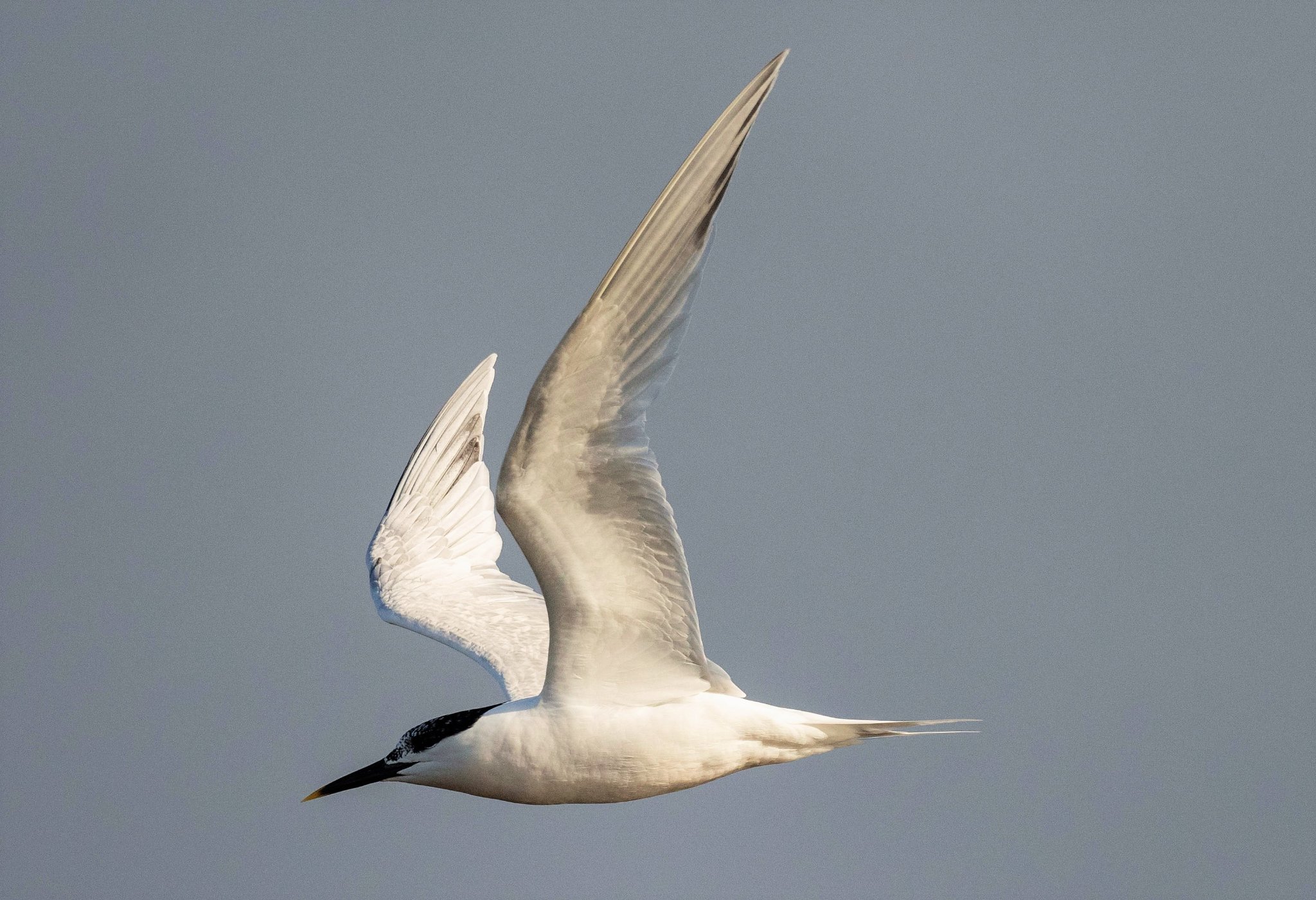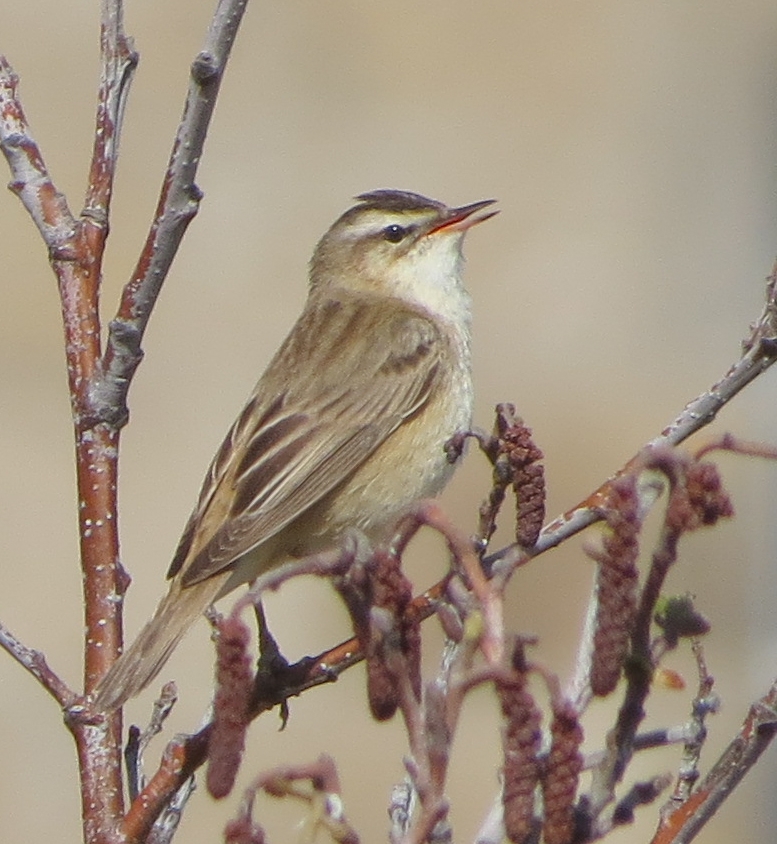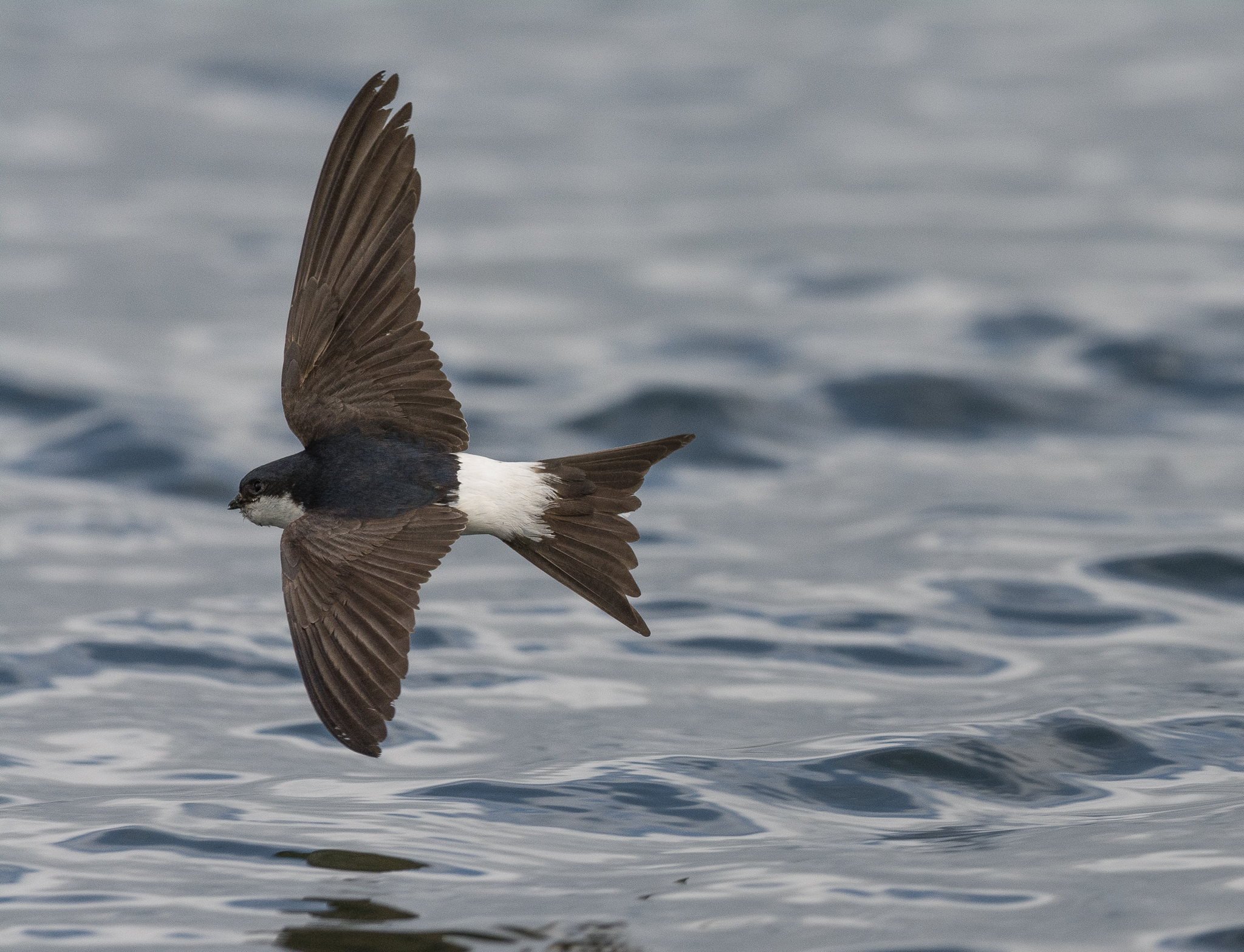- Common Lizard
A small reptile with adults measuring 15cm from nose to tail. They are usually brown in colour with various stripes and spots covering its body, however, they can vary and have found to be black or even an olive green. They typically live in woodland, heathland and moorland but the best place to spot these wee guys at Spey Bay is sunning themselves on the tyres by the entrance to the Icehouse. Sounds like bliss to me. They’re most commonly seen there in the morning so why don’t you take a look before heading in for your morning brew and cake!
- Sandwich Tern
Summer brings us ample sightings of Terns, but if you are anything like me it can be a little tricky to distinguish between them. The Sandwich Tern is the largest of the Terns and probably one of the easiest to pick out with its black tufty head, black legs, and a black beak. Now it can be hard to note at a distance but if you have your binoculars handy, you’ll notice the beak isn’t entirely black, it has a bit of yellow at the tip. A keen birder told me a helpful mnemonic… “butter on the beak sandwich tern”… believe me you won’t forget that in a hurry!
© James Officer
- Sedge Warbler
A medium sized warbler with its most striking plumage features being the creamy white eyestripe and dark crown stripes. Their song is a little faster and more haphazard, lacking the rhythm that the song of a Reed Warbler has. Males never sing the same song twice adding phrases to impress females. The more complex the song the greater the success for the male. Sedge Warbler prefer marsh and scrub land so if you’re visiting Spey Bay take a walk around the triangle path and listen out for their unmistakable song.
© Alison Ritchie
- Red Admiral
Summer means butterfly season is upon us, and recent sunny weeks has meant we have seen a huge variety flitting around the Centre. The Red Admiral is a very well distributed and large butterfly. Striking red bands and white dots break up the dark velvety wings of this highly recognisable species. You don’t have to stray far to be treated to these beauties – our Harbour Garden is home to their favourite flowering shrub, Buddleia. If you are facing the Centre to the left is a smaller car park, walk through it and into the walled garden. The array of flowering plants attracts a lot of micro-fauna, but the Buddleia is notable by its long pointed purple trusses. However, if you fancy walking a little further head along the river path towards the viaduct and I can guarantee you will be able to tick off a few butterfly species.
© WDC Cath Bain
- House Martin
A beautiful small bird with glossy blue-black feathers and snow-white underparts. They are known to construct mud nests in the eaves of buildings which can on average take 3 weeks to make. It is very common for House Martins to nest communally so one ‘mud house’ can often contain several nests and sets of chicks. Sharing is caring… Now, House Martins have very kindly made their mud nest in the outer window of my bedroom which normally means I get a nice early morning wakeup call. If you have taken a stroll along the triangle path and head back towards the centre, you will have a large stone building on your right with a big archway. To the left and up from the archway you will see the mud nest and if you’re lucky you will hopefully see some movement!!!
© David Main






